I have three LEDs (RGB), with the following forward voltages and current:
- red 2.25 V @ 0.35 A
- green 3.3 V @ 0.35 A
- blue 3.1V @ 0.35 A
I plan on using three (3) RFP30N06LE MOSFETs in parallel @ 0.35 A each using independent TTL-based PWM dimming from the PWM pins of an Arduino, each MOSFET connected in parallel to a shared 9V - 12V @ 1 A power rail fed with a wall wart supply.
What would the optimal method be to wire these MOSFETs in parallel and use the same shared power rail?
